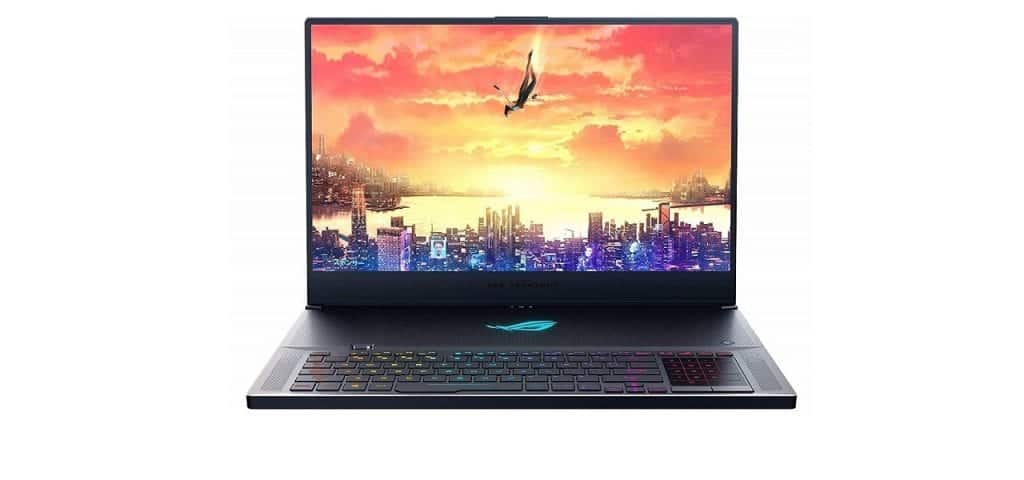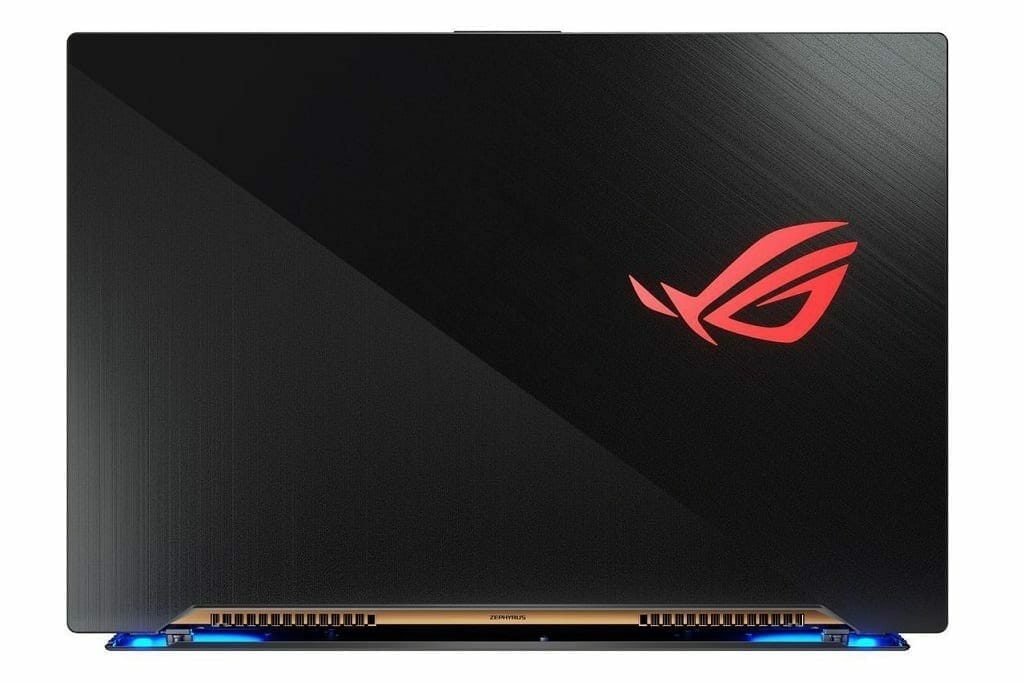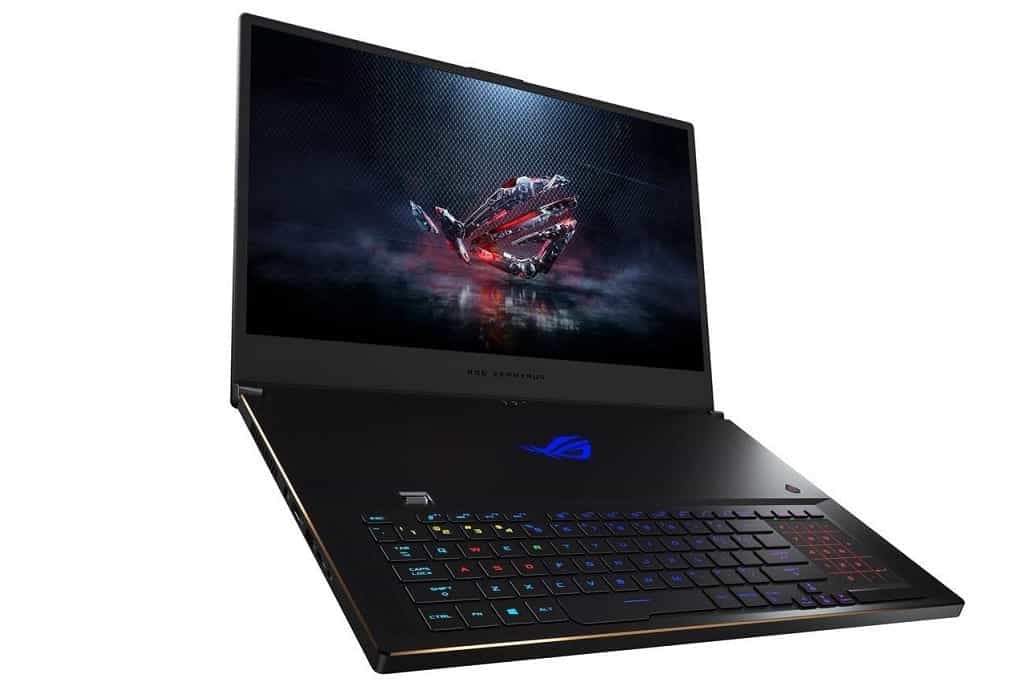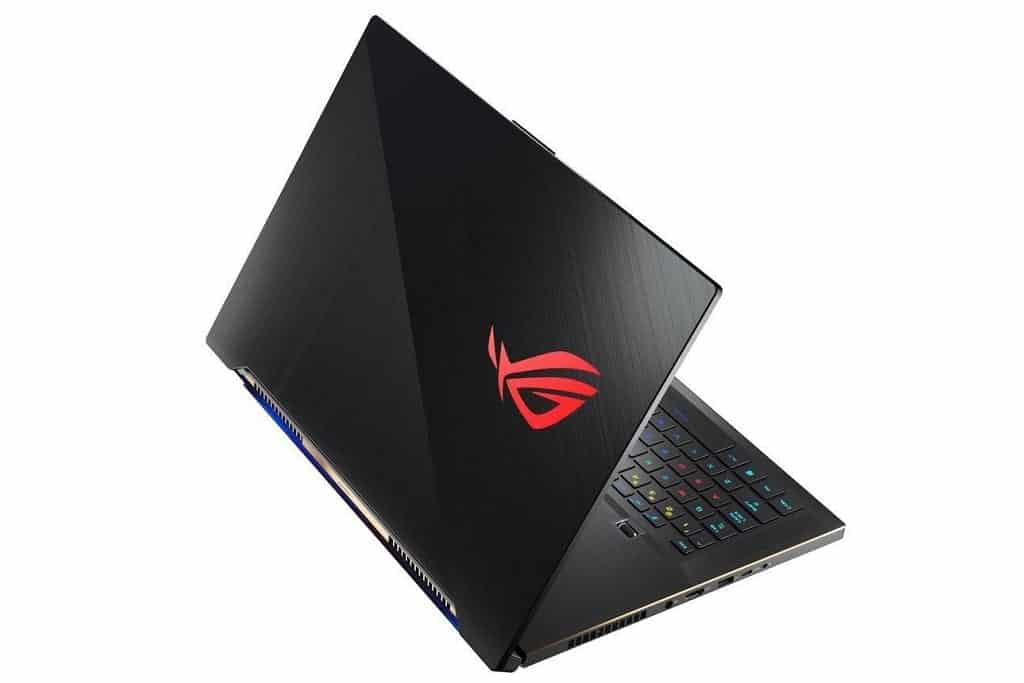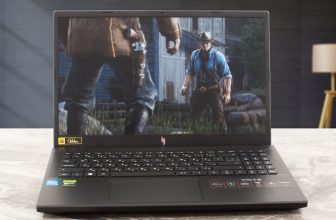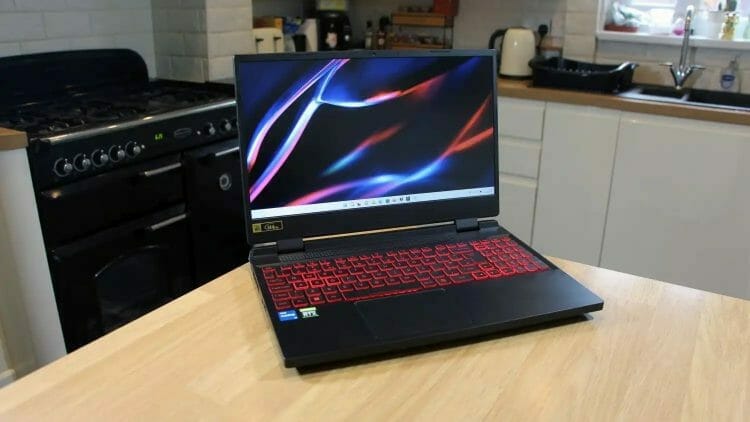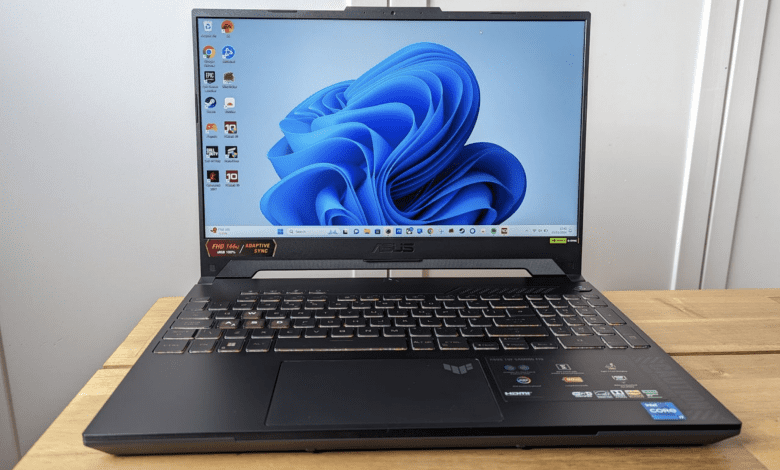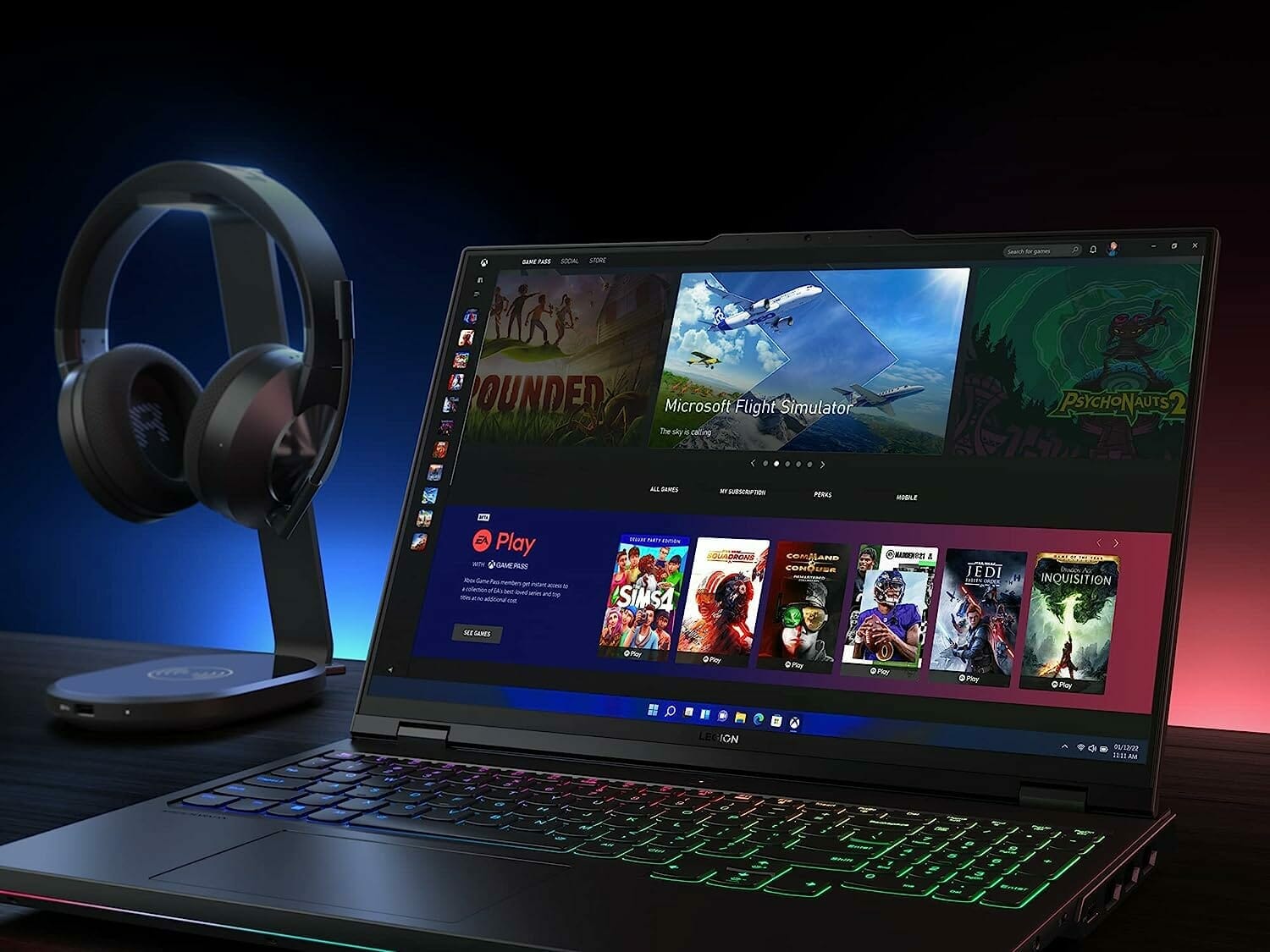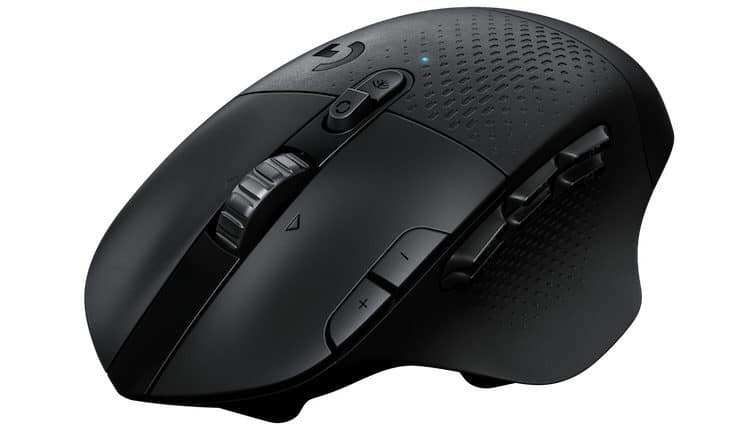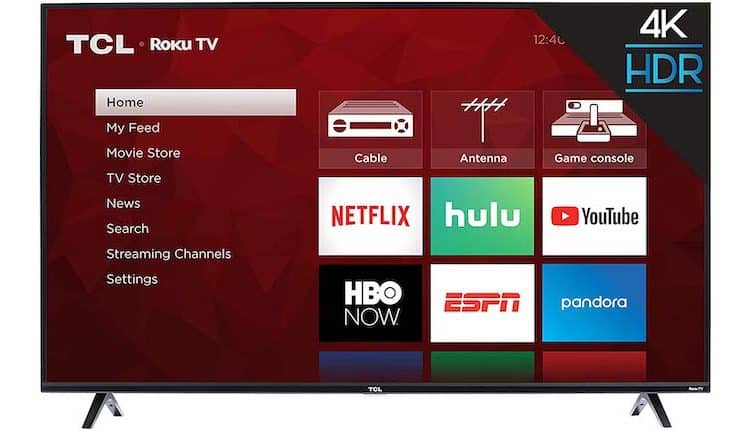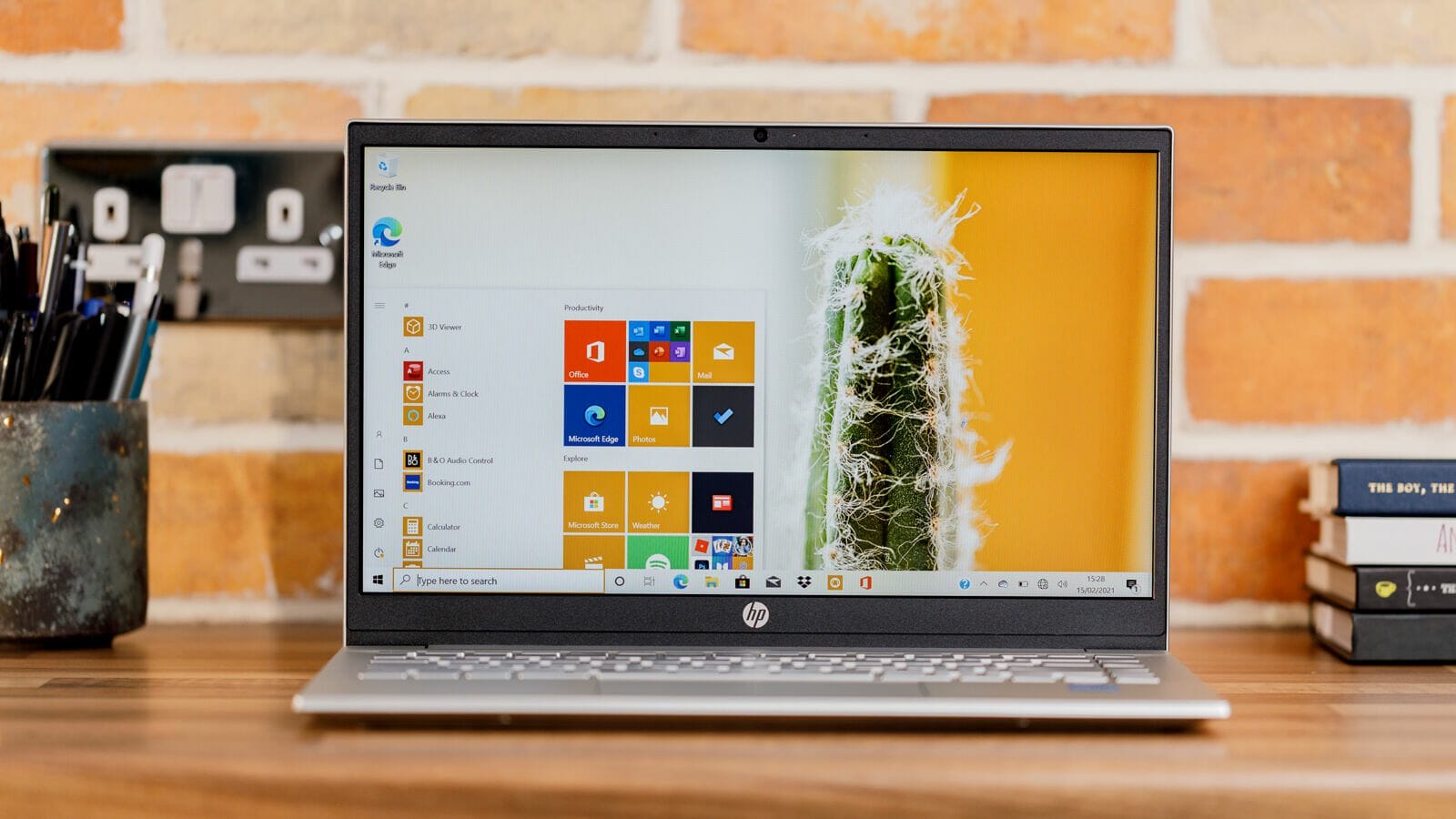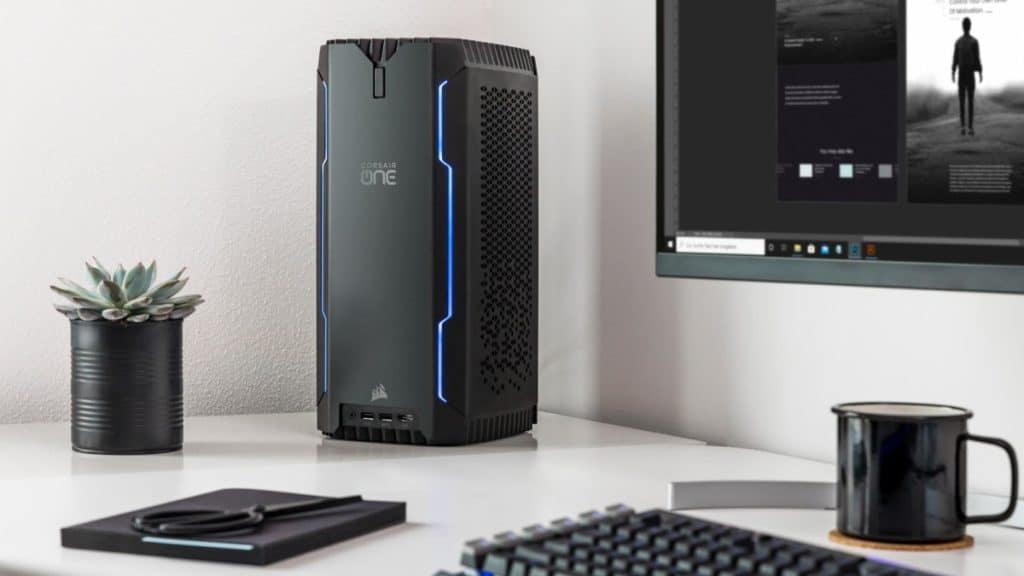With the latest Max-Q gaming laptop, Asus is determined to offer power and thinness in a bigger way. Last year, the Asus ROG Zephyrus was the ‘go-buy’ gaming laptop with the best of both worlds – a thin profile and a high-end Nvidia graphics processor (GPUs). In Q3 of 2018, Asus slimmed it more with the Zephyrus S (both 15 inches), and now it beefing up that model in two big ways.
The Asus ROG Zephyrus S GX701 (GX701GX-XS76) boasts a 17-inch screen on a slim design, and is one of the first laptops we’ve reviewed with Nvidia’s RTX 2080 “Turing” GPU.
A bigger screen is better, the laptop remains incredibly thin, but the new level of power is irresistible. As expected for a 17-inch footprint, the bottom is fairly flimsy, and by nature portability takes a hit, and the RTX performance is stellar, but not miles better over previous equivalent GeForce GTX 1080 “Pascal” GPUs.
The Zephyrus S GX701 remains an excellent, powerful big-screen gaming laptop, but the MSI GS75 Stealth-093 garners our Top Pick award among thin RTX laptops we’ve reviewed so far, while the Alienware 17 R5 remains our overall Editors’ Choice for big-screen gaming laptops.
Design
If you’re coming from the 15-inch ROG Zephyrus, you’ll find this iteration to be a larger sibling that looks very familiar. All models in the Zephyrus family have a uniform look across the board, only that the 17-inch model is stretched across a larger surface area. Looking it from across the room, it looks like a traditional 15-inch notebook.
On the lid, it gets the same split-pattern design while the keyboard has been pushed to the front, creating room for a perforated ventilation on the first half of the deck – on the space between the upper keys and hinges. With this concept design, the touchpad has been shifted to the right ide of the keyboard (and is, fairly narrower than you’re used to).
In the spirit of getting creative with touchpads, the newest Asus ZenBook UX433FA-DH74 integrates an LED-illuminated into the touchpad surface, activated by a small icon in the corner. The feature works well, but most of us still prefer our touchpad responsive and flawless. Back to the ROG Zephyrus, both the keyboard positioning and touchpad will take some getting used, I don’t think either is ideal.
They are functional, responsive, but they would-be roomier though not the worst sacrifices to make in getting requisite cooling in such a thin laptop. In some laptops, manufacturers make concessions with powerful components in order to get this level of cooling, but here Asus manage to live up to the Max-Q design philosophy without sacrificing performance.
Display
The larger screen doesn’t make the Zephyrus S GX701 thicker than the 15-inch model. Thin it is, and quite bigger overall. It measures 0.73 by 15.7 by 10.7 inches (HWD) and weighs 5.9 pounds; much wider and deeper than the 15-inch model that weighs only 4.6 pounds. As always, cooling down such a thin laptop with immense raw power needs a critical approach of which Asus uses a bottom panel that extends and retracts as you open and close the screen clamshell.
In doing so, more ventilation is created through the bottom and out the sides, since the overall footprint is too thin for solid rear or side vents. We had an issue with the original Zephyrus’ flimsy bottom that bowed when too much pressure was applied, especially if you attempted to walk with the screen open.
The issue seems to have been rectified ion the thinner Zephyrus S, thanks to a sturdier flap that started further up the chassis, meaning it didn’t have much room for flex. The same approach has been extended to the bigger 17-inch Zephyrus GX701.
Another big win here is the screen. It looks gorgeous. I had fallen in love with the 15-inch Zephyrus S screen, now, Asus has essentially made it larger. On this model, the screen measures 17.3 inches diagonally, is an IPS panel with full HD (1,920-by-1,080-pixel) native resolution. Many would wish the resolution was much higher, especially for the price, but it is perfectly tuned and optimized for 1080p gaming.
Display quality is top-notch, of course, can’t be otherwise especially when Asus has included a 144hz refresh rate, Nvidia G-Sync support and a 3ms response time. As specced, it is one of the well-packaged gaming-laptop displays out here, that comes out as an enhancement to overall game play. The MSI GS75 Stealth’s screen has a similar feature set, only that it lacks G-Sync support, but it still rocks.
New Features and Configurations
This iteration of the ROG Zephyrus comes in two configurations: the Zephyrus “GX701GX” version (our review unit) being the upper model. It packs a Nvidia GeForce RTX 2080 Max-Q GPU, Intel’s Core i7-8750H CPU, 24GB or RAM, and a 1TB M.2 NVMe SSD. The same model will also be available in a lower spec sheet – 16GB of memory and a 512GB SSD. The other version will be a lower-spec laptop with a lesser CPU and an RTX 2070 GPU, otherwise it remains the same.
Notable features here that you won’t find in the Zephyrus S include a tiny volume scroll wheel on the left-hand side, just above the keyboard. A new but much welcome feature that is customizable with a LED glow. The keyboard is also customizable via the included Asus Aura options bundled into Asus’ Armoury Crate software, which swiftly integrates system performance monitoring and controls options. And, there is a dedicated Armoury Crate key right above the touchpad, that easily brings up the software any time you need it.
Ports
Lately, one thing we’re sure about spendy laptops is well-rounded port offering. On the Zephyrus S GX701 connectivity is excellent. There is a USB 3.1 port, a USB Type-C port, and an HDMI output on the left flank, as well as a power-adapter and headset jacks. The right side holds two more USB 3.1 and another USB Type-C port. That should be enough for all your peripherals, a gaming mouse, external drives and video-out options. If you need to use DisplayPort, you will have to do it via a USB-C adapter.
Performance
As a rule of thumb, luxe gaming laptops carry enough raw processing power and are speedy enough for everyday productivity tasks –like you can browse the web, do heavy office work and execute heavy professional tasks like video and media encoding. Our review unit packs a punch in way of Intel’s “Coffee Lake” Core i7-8750H (2.2GHz) CPU, Nvidia GeForce RTX 2080 (‘Turing’, 8GB, Max-Q) GPU, 24GB of memory and 1TB SSD storage. For creative artists and professionals who need a laptop for real-world productivity and content-creation, this Zephyrus S is a sure score.
The Zephyrus S GX701’s hexa-core processor is zippy, and while it may not deliver workstation-level performance, it can definitely handle media projects on par with other gaming machines in its class. It stacks up well against the likes of Alienware 17 R5 and MSI GS75 Stealth, something we attribute to the tuned-down Max-Q version of the RTX 2080, that unlocks access to the new ray-tracing technology in games.
Gaming Performance
For anything, we expect a system outfitted with the very top components to deliver stellar gaming performance. The Zephyrus does exactly that, thanks to a potent Nvidia GeForce RTX 2080 (8GB, Turing) graphics card, that comes second to only the RTX 2080 Ti GPU. Played at 1080p and maximum, the system averages 96fps and 105fps on Far Cry 5 and Tomb Raider, respectively. The numbers are comfortably over 60fps and certainly won’t dip while playing other modern titles since tere’s enough headroom.
While the screen resolution isn’t quite enough to take full advantage of the 144Hz display, it will still reproduce more than 60fps even if it won’t hit the refresh ceiling, while less-intensive games will for sure shoot to the last frame rates. As I mentioned earlier, the MSI GS75 performs better on game tests (Far Cry 5 – 99fps; Tomb Raider – 121fps) and has a better cooling option compared to the Zephyrus S GX701’s bottom panel cooling.
Also included in the Zephyrus is Turbo Mode that you can access in the Armoury Crate software, only that it makes the fans produce loud sounds. When playing in normal mode, the fans are very tame and occasionally loud. Engaging turbo mode boots frame rates by only single digits, so it is not very necessary.
Battery Life
Gaming laptops, especially the high-end machines are never the best when battery matters. In power-save mode the Zephyrus S GX701 manages just over 5 hours, which is not exceptional in any sense, but is among the best in this batch, and a surprise given the laptop’s size and power. If you shift to balanced mode, you’re getting less that, but five hours is still legitimately useful amount of time for a power-use laptop.
Again though, the MSI GS75 Stealth triumphs over the GX701, with a battery that lasts slightly over six hours. Also, being light, it is an appealing prospect to carry around and use away from a power source.
The Bottom Line
Now, the Asus ROG Zephyrus S GX701 is a complicated one. It has a crisp display that looks great, has tons of speedy storage, and isn’t prohibitively heavy for anyone who wants a gaming laptop to tote around on daily commute. On the other hand, taken as a whole, the 15-inch version of the Zephyrus S looks like a better option – still, I’m not convinced about the footprint and relates sacrifices at this screen size.
Sure, it’s thin and sleek-looking than most 17-incher, but on the other hand the size and weight somewhat undermine the concept of Max-Q portability. While you can easily carry it around with you, it is not one of those systems you’d want to carry very often.
On that note, it’s without a doubt powerful enough for greater-than-60fps gaming, but it surprisingly doesn’t overshadow the previous-gen Pascal Cards. That’s to mean that if you have a system rocking a late model GTX 1070 or GTX 1080/Ti, you probably keep your appetite for the latest system.
For now, we applaud the Zephyrus S for a bump in power, and if I were to buy a high-end gaming laptop in 2019, I’d certainly for the newest technology, which points to, in part, GeForce RTX. All said, the Zephyrus S GX701 has its place among high-end gaming laptops sporting high-quality parts except for the finicky bottom panel.
The Dell Alienware 17 R5 remains our top pick for high-end gaming laptops, while the MSI GS75 takes the top honors for the best GeForce RTX-based gaming laptops. If portability and power matter to you more than anything else, the Razer Blade 15 or the 15-inch Asus Zephyrus S GX531GS-AH76 are our favorites.
Our Pick

